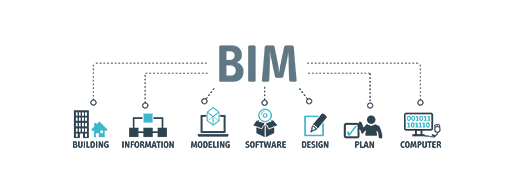AEC collaboration tools in 2020
We were curious as to what tools are most used for collaboration among Architecture, Engineering and Construction (AEC) companies. A closer look at our users and their needs lets us understand more about their business processes and how they are mapped.

Research setup for AEC collaboration tools
We used LinkedIn for this research. We asked 100 companies about their preferences when it comes to collaboration tools. The respondents come from 16 countries of 4 continents.
What are AEC collaboration tools?
They are software and SaaS solutions that allow AEC teams to work together online, real time, thus creating a more productive collaborative working environment (CWE). These applications are the successors to information exchange via emails and phone calls.
Can the same solution be used in multiple settings? According to over 100 participants, usually, there is a mix of these applications in place for three main categories we focused on:
- Internal information exchange
- External information exchange
- Model coordination
Below, we provide a list of the top 10 of each of the three main categories.
Internal information exchange
The decision about which apps to use for internal communication is at the company’s sole discretion with no outside factors at play.
Smaller firms have less sophisticated or no ICT systems in place in comparison to larger ones. Among our participants, this often is reflected through the use of email and phone calls as well as free apps like Whatsapp. The daily communication and information exchange needs are restricted to a couple of professionals here, so there is no need for more.
Top 10 internal communication tools
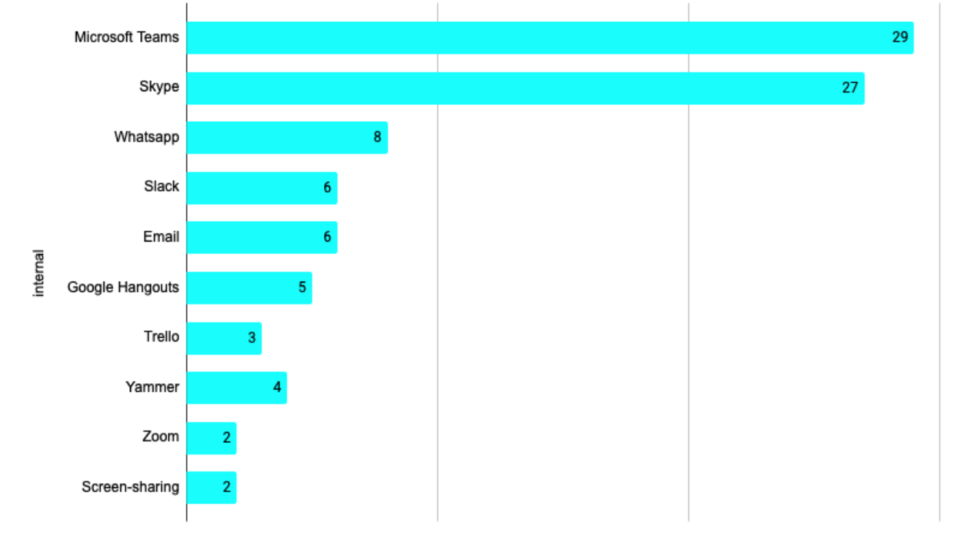
However, as expected, larger teams use one or more of the premium versions of these tools. Microsoft Teams and Skype for Business come in at first and second place respectively in terms of adoption numbers.
External information exchange
When it comes to the decision about which external tools to use, it often depends on the external partners, as they might risk complicating their workflow more by using different apps with different contractors or companies.
Whilst Microsoft Teams took first place in the internal communication category, it fell to second place behind Skype as far as external communication is concerned. This is because Skype is also used for personal business and it became widely used in AEC as well for external communication. Email is still a prevalent means of communication with professionals outside of one’s company. The reason for this is often having to adjust to others who might not be familiar with the most current tools.
Top 10 external communication tools
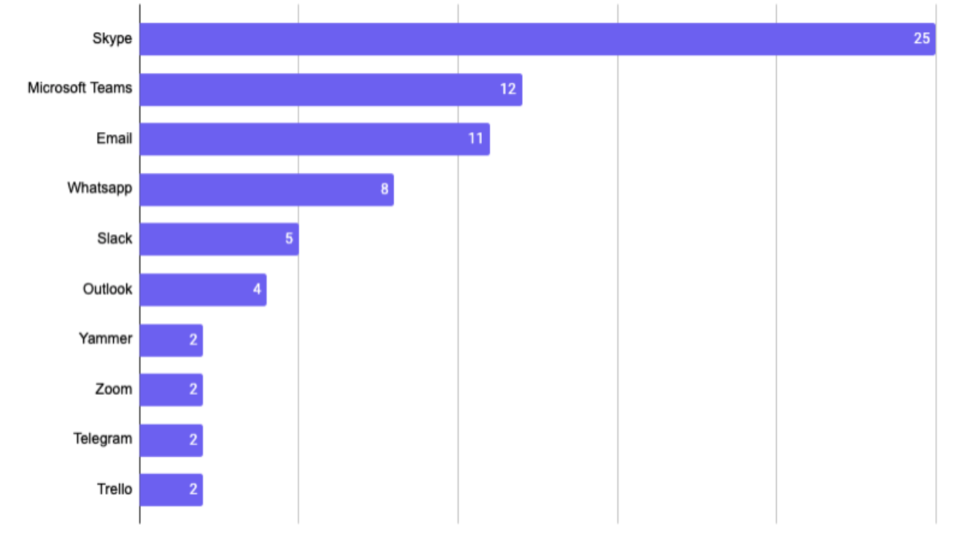
The construction industry is a rather conservative one where the level of digitalisation is not on par with other industries where they use more digital workflows.
BIM model coordination
Only a small number of participants specified which software solution they use for BIM model coordination. It became clear, however, that in this category there is a mix of them used too depending on the company.
Top 10 model coordination tools
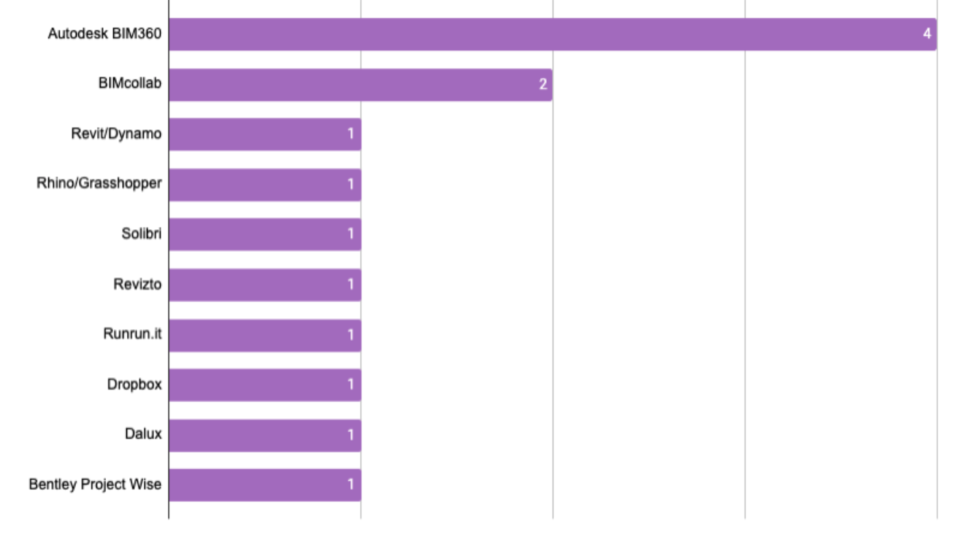
In some cases, our respondents were not allowed to disclose such information. Unsurprisingly, Autodesk BIM360 and BIMcollab were mentioned multiple times.
The geographical reach of our research study
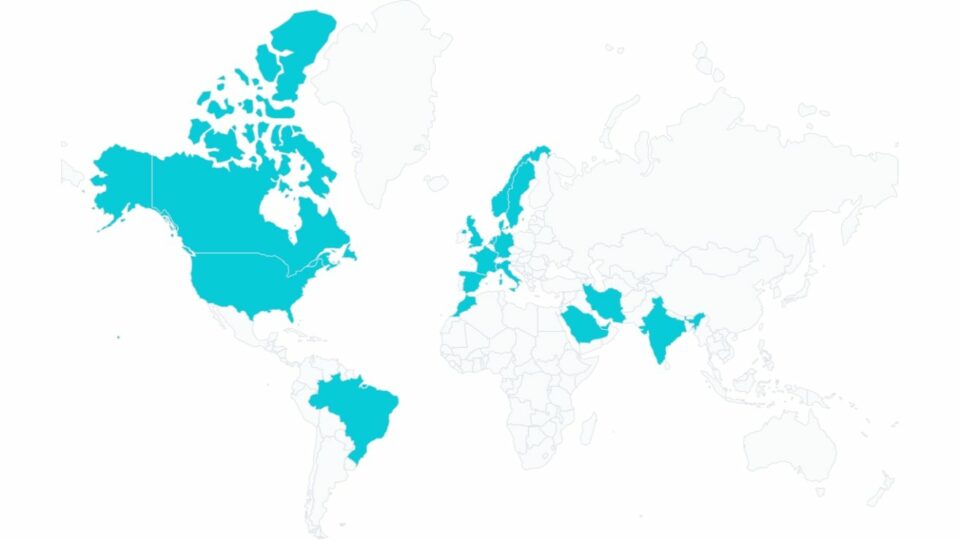
Our conclusion
If we analyse the results by country, we see that in Denmark, Italy, Brazil and the UK, there is a greater spread of alternative tools used, while in the other countries most companies adhere to the two favourites.
We confirmed that, on average, companies use at least 3 such tools that, in most cases, cover the three main areas we focused on in this research. There is no app yet that seems to be able to do it all, which, according to the specific capabilities of each solution, is more or less impossible.
Similarly to other industries, a best of breed approach seems to cover the needs holistically as well as sustainably in the long run.
What became clear besides geographical and quantitative findings is that companies are flexible enough internally to adopt any solution that seems fit for any given use case.
Nevertheless, the number of apps used depends on the external stakeholders as well – generally, the company adopts ways to be able to communicate via apps preferred or already used by the externals. This usually results in having 3 or more apps for communication within an AEC industry company.
You might also be interested in…
BIM Basics and Implementation
How does IFC (Industry Foundation Classes) work?
The IFC standard has been developed by BuildingSmart to make a global standardised tool that could support and monitor construction progress and life cycle of buildings

Bálint Bende



